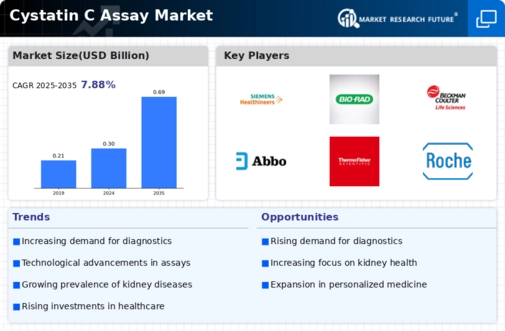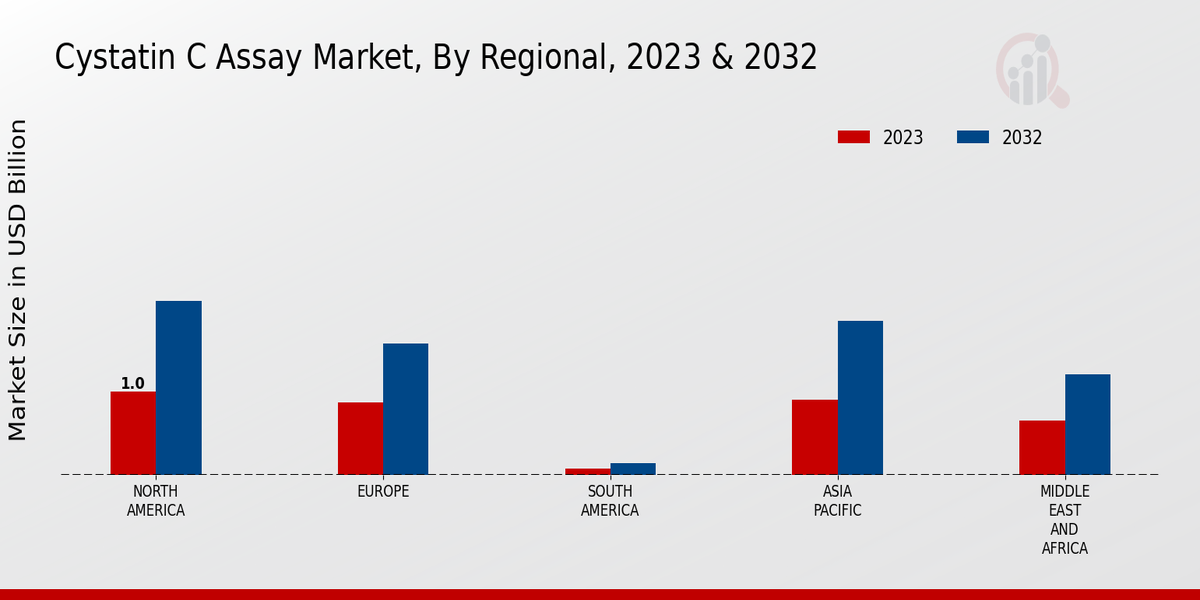Market Growth Projections
Growing Geriatric Population
The global increase in the geriatric population is a significant factor driving the Global Cystatin C Assay Market Industry. Older adults are at a higher risk of developing kidney-related issues, necessitating regular monitoring of renal function. According to projections, the number of individuals aged 65 and older is expected to double by 2050, reaching approximately 1.5 billion. This demographic shift underscores the need for effective diagnostic tools like Cystatin C assays. As healthcare systems adapt to cater to an aging population, the demand for reliable kidney function tests is likely to rise, thereby contributing to the market's expansion.
Regulatory Support for Biomarkers
Regulatory bodies worldwide are increasingly recognizing the importance of biomarkers in disease management, which positively impacts the Global Cystatin C Assay Market Industry. Initiatives aimed at validating and standardizing biomarker tests enhance their credibility and acceptance in clinical practice. For instance, guidelines from health authorities advocate for the use of Cystatin C as a reliable marker for assessing kidney function. This regulatory support fosters confidence among healthcare providers and encourages the adoption of Cystatin C assays. As the market evolves, such endorsements are likely to facilitate growth, with projections indicating a market size of 0.69 USD Billion by 2035.
Rising Prevalence of Kidney Diseases
The increasing incidence of kidney diseases globally is a primary driver for the Global Cystatin C Assay Market Industry. Chronic kidney disease (CKD) affects millions worldwide, with estimates suggesting that approximately 10 percent of the global population suffers from some form of CKD. This rising prevalence necessitates effective diagnostic tools, such as Cystatin C assays, to monitor kidney function. The market is projected to reach 0.3 USD Billion in 2024, reflecting the urgent need for reliable biomarkers in clinical settings. As awareness of kidney health grows, the demand for Cystatin C testing is likely to expand, further propelling market growth.
Advancements in Diagnostic Technologies
Technological advancements in diagnostic methodologies are significantly influencing the Global Cystatin C Assay Market Industry. Innovations in assay techniques, such as high-throughput screening and improved sensitivity and specificity of tests, enhance the accuracy of kidney function assessments. These advancements facilitate earlier detection of kidney dysfunction, which is crucial for timely intervention. As a result, healthcare providers are increasingly adopting Cystatin C assays in clinical practice. The market is expected to grow at a CAGR of 7.87% from 2025 to 2035, driven by these technological improvements that promise to enhance patient outcomes and streamline laboratory workflows.
Increased Research and Development Activities
The surge in research and development activities focused on kidney health is a notable driver for the Global Cystatin C Assay Market Industry. Academic institutions and pharmaceutical companies are investing in studies to explore the utility of Cystatin C in various clinical scenarios, including its role in predicting cardiovascular risks associated with kidney dysfunction. This research not only validates the clinical relevance of Cystatin C but also opens avenues for novel applications in personalized medicine. As R&D efforts intensify, the market is poised for growth, with a projected CAGR of 7.87% from 2025 to 2035, reflecting the increasing interest in kidney health diagnostics.








